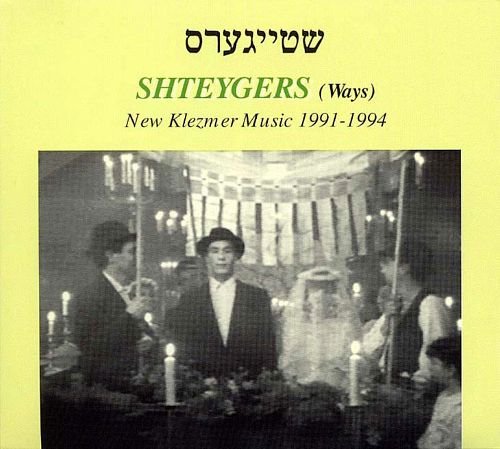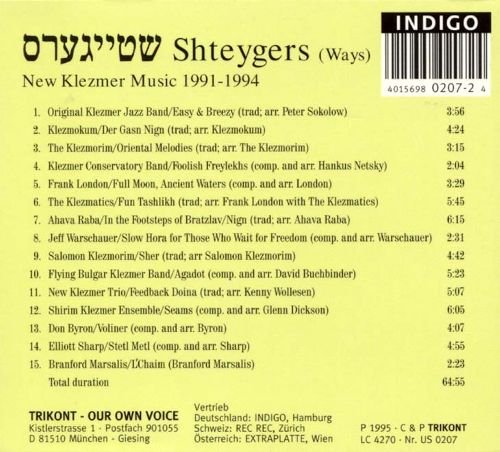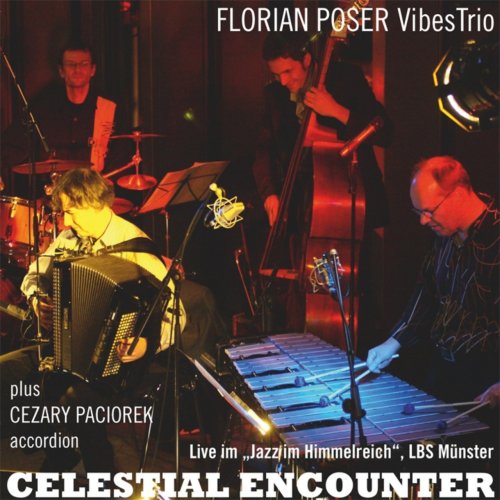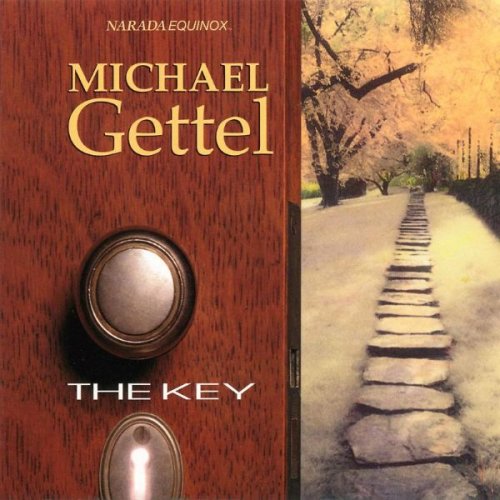VA - Shteygers (Ways): New Klezmer Music, 1991-1994 (1995)

Artist: VA
Title: Shteygers (Ways): New Klezmer Music, 1991-1994
Year Of Release: 1995
Label: Trikont
Genre: Folk, Jazz, Klezmer
Quality: Mp3 320 / Flac (tracks)
Total Time: 01:04:48
Total Size: 157/402 Mb
WebSite: Album Preview
Title: Shteygers (Ways): New Klezmer Music, 1991-1994
Year Of Release: 1995
Label: Trikont
Genre: Folk, Jazz, Klezmer
Quality: Mp3 320 / Flac (tracks)
Total Time: 01:04:48
Total Size: 157/402 Mb
WebSite: Album Preview

Tracklist:
01. Original Klezmer Jazz Band - Easy & Breezy
02. Klezmokum - Der Gasn Nign
03. The Klezmorim - Orientel Melodies
04. Klezmer Conservatory Band - Foolish Freylekhs
05. Frank London - Full Moon, Ancient Waters
06. The Klezmatics - Fun Tashlikh
07. Ahava Raba - In The Footsteps Of Bratzlav/ Nign
08. Jeff Warschauer - Slow Hora For Those Who Wait For Freedom
09. Salomon Klezmorim - Sher
10. Flying Bulgar Klezmer Band - Agadot
11. New Klezmer Trio - Feedback Doina
12. Shirim Klezmer Ensemble - Seams
13. Don Byron - Voliner
14. Elliott Sharp - Shtetl Metl
15. Branford Marsalis - LChaim
This volume in Trikont's excellent klezmer series focuses on the years when klezmer was being built upon and extrapolated all across the country, but primarily in New York where jazz musicians had found a new medium for expression and klezmer musicians were reaching out into other world forms and slipping them into the wedding music mix so often that klezmer is no longer strictly wedding music. It is now a bona fide jazz idiom as well. If you're skeptical, check out the opening track here by the Original Klezmer Jazz Band, "Easy & Easy," a traditional number harmonized for three clarinets by Dave Tarras. There are three here as well as piano, trombone, trumpet, banjo, bass, and drums. It's inspired equally by Naftule Brandwein and Benny Goodman and swings like hell. And then there's Klezmokum from Amsterdam performing "Der Gasn Nign (The Street Melody)," which marries a traditional tune to the blues of post-bop and cabaret music from the Weimar Republic. The truth is, however, we are only at the beginning. Included are the experiments of the klezmorim further down the road with a much larger band, the klezmer antics of Don Byron, and the anarchy and avant-garde grandeur brought to the music by Frank London and Elliot Sharp, as well as the good-natured zany assault on the traditional music by the New Klezmer Trio. There are also tunes by the Klezmatics, which are a high-concept klezmer unit well known in the U.S. and abroad, and the truly spooky and beautiful Ahava Raba whose "In the Footsteps of Bratzlav/Nign" is a space where Gypsy klezmer meets the classical requiem and the harmonic invention of third stream jazz before entering into an engagement with the avant-garde. The track is so musically sophisticated it's a wonder anyone can play it with its numerous tempo and key signatures, all of which come to a head in a microtonal mode resembling medieval polyphony! It's easily the most challenging and satisfying track on the disc. The set closes with Branford Marsalis of all people and his own composition, "L'Chaim." Here, a New Orleans jazzman takes on the form with all the class he can muster, and that's plenty. With a traditional New Orleans brass band and rhythm section, Marsalis makes a stomping, marching, dancing wedding music that reveals the neatly invisible lines between jazz and klezmer, as this tune sounds as much like a New Orleans second-line blues as it does a wedding stomp. The only regret is there isn't a fourth volume in the set that documents all that has happened in klezmer since 1994, because there is a wealth of material that offers further evidence of the innovation and experimentation in the music, as well as documents the ensembles that are staying strictly within the tradition. In the meantime, these three volumes are a treasure trove of a music that has become from its peasant origins in Eastern Europe a part of every Western nation's musical heritage. These are essential recordings for listening to the breadth and depth of the klezmer experience from the 20th century, and this last one, as it points to the 21st.
![Tom Cohen - Embraceable Brazil (2025) [Hi-Res] Tom Cohen - Embraceable Brazil (2025) [Hi-Res]](https://img.israbox.com/img/2025-12/18/vgt0kbsml69jbixcu67jkruae.jpg)
![Mark Northam - More Music From The Pixar Films For Solo Piano (2025) [Hi-Res] Mark Northam - More Music From The Pixar Films For Solo Piano (2025) [Hi-Res]](https://img.israbox.com/img/2025-12/17/qc8ci6ocl25zt4m9ojnjn3k2k.jpg)




![Travis Jenkins Piano Trio - Jazz in Meanjin 020 (Live at JMI) (2025) [Hi-Res] Travis Jenkins Piano Trio - Jazz in Meanjin 020 (Live at JMI) (2025) [Hi-Res]](https://www.dibpic.com/uploads/posts/2025-12/1765862611_a2068783921_10.jpg)
![Tomasz Stanko - Unit (Polish Radio Sessions vol. 2/6) (2025) [Hi-Res] Tomasz Stanko - Unit (Polish Radio Sessions vol. 2/6) (2025) [Hi-Res]](https://www.dibpic.com/uploads/posts/2025-12/1765796826_cover.jpg)
